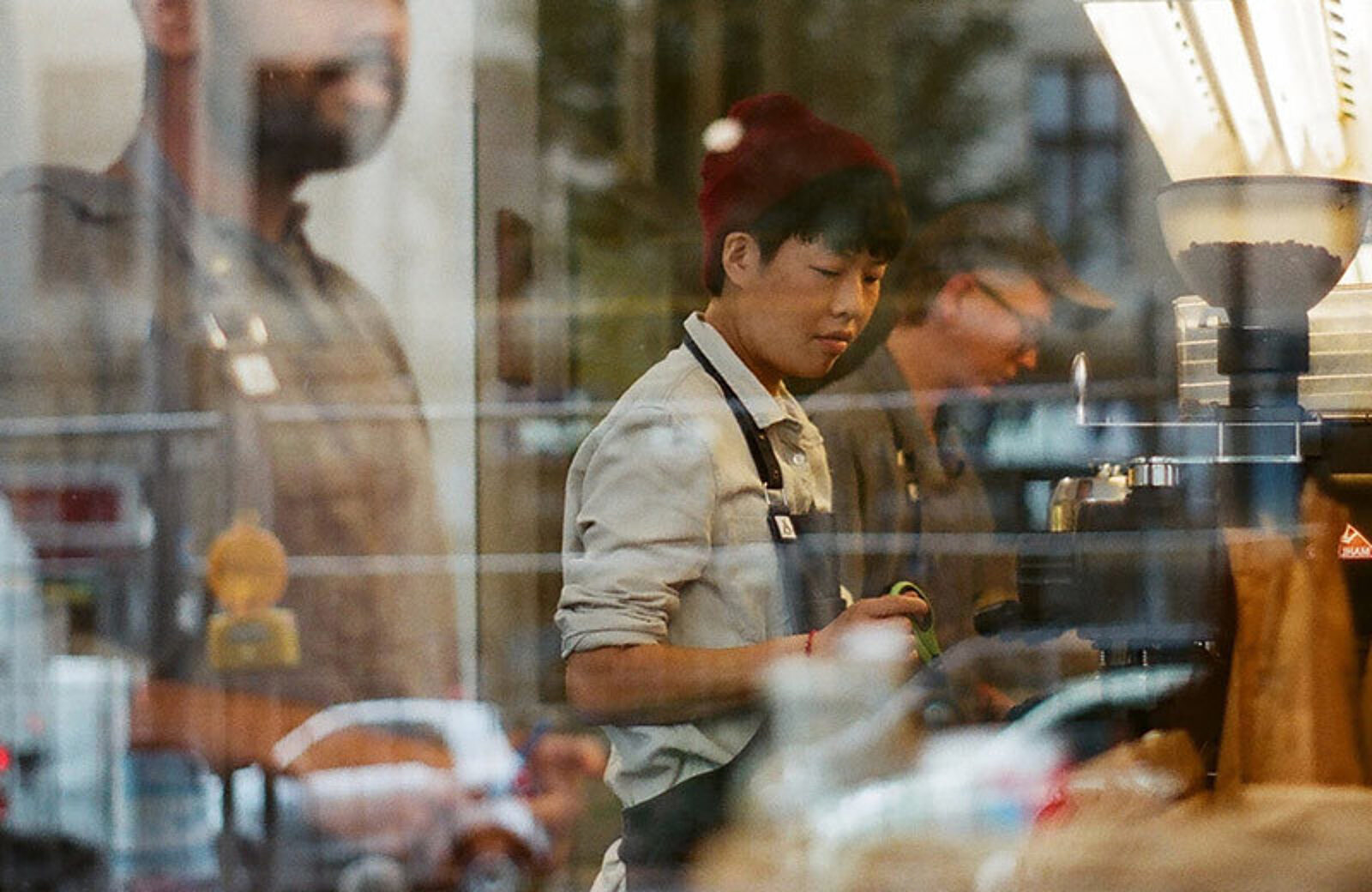How to Lower Restaurant Labor Costs in 2024

Katherine BoyarskyAuthor
Restaurant labor costs are skyrocketing — and that's if you can even find new staff members.
Restaurant staff have been rightfully asking for better pay, benefits, and predictability in their jobs for years. Those asks understandably got louder during COVID, forcing restaurant to find ways to create better workplaces.
Operators are getting creative with their staffing, often having to keep a leaner team in order to pay them better and provide benefits, or implementing a service charge instead of leaving tips up to the customer.
From fostering employee retention to tip pooling and optimizing hours, there are many factors that go into keeping labor costs in check. It's vital to have controls in place to manage your restaurant's labor costs — the primary driver of which is the employee schedule.
The schedule is viewed as a simple tool needed to organize shifts and ensure enough staff are scheduled to operate the restaurant at any given time. This is certainly true, but the implications and impacts proper restaurant scheduling can have on labor costs are massive.
Read on to learn the changes you can make in your restaurant to control your labor costs and maximize your restaurant’s profitability this year, while keeping your staff’s needs in mind.
Restaurant Scheduling Template
Use the Restaurant Scheduling Template to easily schedule your restaurant staff's shifts.

How to Reduce Labor Costs in a Restaurant
As mentioned, your employee schedule is key to managing and lowering labor costs at your restaurant. By crafting your schedule with intention, using a data-driven mindset, and implementing new technology, you can help optimize the amount of employees in the restaurant at any given time — ensuring employees are being optimally utilized.
Let’s take a look at a few ways you can reduce labor costs in your restaurant through the use of informed scheduling:
1. Schedule Fewer Employees on Each Shift
There’s a myth in the restaurant and hospitality industry that bringing in more staff gives your guests better service.
Of course, you want to give your guests a great dining experience with incomparable customer service. To plan for this, you may think about bringing in more servers or additional cooks for faster ticket times. But when you have too many people working and not enough work to be done, employees may wind up getting bored and feeling disengaged. And according to Rewards Network, overstaffing your restaurant can lead to your employees’ tips shrinking, too.
There’s a fine balance to strike here: Scheduling too few staff members leaves your employees vulnerable to getting slammed with too many customers and eventually burning out. Too many and you’re stuck paying employees to stand around.
Ultimately, your restaurant's guests get the best experience when you’re staffed to a level where you think you might be able to use one more person on the floor, where there’s enough of a sense of urgency to keep everyone moving, and where staff only have time to stay focused on the guests. The end result is happy customers, higher sales, more tips per server, and lower labor costs.
To ensure you’re optimizing your employee schedule, use a Restaurant Scheduling Template. And, save time each week and simplify those exhausting scheduling tasks with an integrated platform between Toast POS and Sling. With Scheduling, powered by Sling, you can reduce miscommunication across your team with real-time notifications, and access labor data synced with your schedules to help you control your labor costs each week. Learn more about Scheduling, powered by Sling here.
Restaurant Operator Insights Report
See insights from real restaurant operators which can help you benchmark your current and planned restaurant technology stack against your peers as we head into 2024 and beyond.

2. Track Labor Cost Daily and Watch Your Weekly Average
Track your restaurant’s labor cost every day.
As you have a restaurant point-of-sale (POS) system, you already have all the tools you need to calculate your labor costs.
The hard part about this process is understanding that your labor target is different each day. For example, let’s say you’re aiming for a total 30% labor cost for all hourly employees, before taxes, benefits, insurance, and not including salaried management. You use that percentage goal to adjust your schedule to be on budget. What you’ll find is that your labor cost — based on how you scheduled — may be at 33% on Monday after a busy weekend due to the extra prep that needs to be done at the beginning of the week, and since Monday is your slowest sales day.
Take a look at weekly averages as your guiding light. If you’re hitting 30% over the course of a full week, balancing slow days and line-out-the-door days, you’re on target.
How to Calculate the Cost of Labor
First of all, there are two different ways to calculate the cost of restaurant labor: as a percentage of sales or as a percentage of total operating costs.
To calculate labor cost as a percentage of sales:
Determine the total amount your restaurant pays all employees throughout the year.
Determine the restaurant’s total revenue before and deductions have been made.
Divide the total employee cost by your annual revenue.
Multiply by 100.
For example, if your restaurant employees cost $300,000 a year and your annual revenue is $1,000.000 then your labor cost percentage is 30%.
To calculate labor cost as a percentage of total operating costs:
Determine the total amount your restaurant pays all employees throughout the year.
Determine the restaurant’s total operating costs, not just sales, but all marketing, rent, food, drink, and other costs.
Divide the total employee cost by your total operating costs.
Multiply by 100.
For example, if your restaurant employees cost $9,000 per month and operating costs are $15,000 a month, your labor cost percentage is 60%.
What is a good labor cost percentage for a restaurant?
What is defined as a “good” labor cost differs depending on which end of the industry your restaurant lies on. Restaurant labor costs typically range between 30-35% of a restaurant’s total revenue. However, this benchmark is shifting and many restaurants have a labor cost percentage hovering around 40%.
More specifically, the lower the level of service, the lower end of the range, and for fine dining restaurants may have a higher labor cost percentage. Quick service restaurants can expect to budget about 25% of their revenue for labor costs, casual dining labor costs are more in the range of 25%-35%, and fine dining labor costs are higher, around 30%-35%. Remember, these ranges should be treated as industry benchmarks, but your restaurant may have specific needs that increase or decrease your own benchmarks.
To track the labor cost health of your specific restaurant, you’ll instead need to compare labor cost percentages across a quarter and year to monitor trends.
3. Schedule Restaurant Staff Based on a Sales Forecast
Don’t just rely on your gut feeling when it comes to restaurant scheduling. It’s extremely common for restaurants to schedule "like they always do," even when their sales are lower than expected or when they’re coming out of a high season. The truth is this practice can rob you of your profits faster than anything else in your business.
Instead, examine your past labor cost trends down to the season, month, and day of the week to take an informed approach to scheduling. Additionally, having a labor cost target to shoot for helps immensely.
How to Forecast Restaurant Staffing Needs
Multiply your forecasted sales by your labor cost percentage target to know how much money you can spend on labor next week. Subtract salaried management and, like magic, you know what you can spend on hourly employees to stay on budget. Now, adjust your schedule to match. This allows you to go into the week on budget instead of bringing people in and praying you’re busy enough to pay for them.
Pro tip: Be on the lookout for extraneous factors like local events and even the weather. No one likes getting a shift cancelled, but if it’s going to be a thunderstorm-filled Saturday, you’ll likely need half the staff you’d planned for.
4. Implement Restaurant Technology
Incorporating technology designed for restaurants can significantly reduce labor costs and, in turn, give you more revenue to pay employees and improve operations for your customers.
Consider implementing restaurant technology like self-service ordering at the table or on touch-screen kiosks, a new restaurant point-of-sale software, or improved communication on your website or social media accounts. By integrating technology into your restaurant operations, you can better predict busy customer timing and forecast staffing needs using data.
When restaurateur Kevin Healy added Toast Order & Pay™ to his restaurants, enabling customers to order using tabletop technology, they improved overall restaurant operations, even after seeing sales declining due to the pandemic.
Healy’s eight restaurants benefited from the added technology from Toast products, and:
Saw a nearly 10% increase in bottom line revenue
Were able to provide 25-30% pay raises for their restaurant staff
Increased take-home pay by eliminating tips and adding a 20% service charge to all bills
They also saw the additional restaurant operations changes like servers having more defined roles, improving service and guest hospitality by giving time back to servers, and overall creating a better dining experience.
5. Optimize Restaurant Operations Using the New Steps of Service
Restaurants have been operating in the same way since the dawn of the “full service restaurant” as we know it, but much like the addition of technology, restaurant operations as a whole are ripe for a modern update.
That’s where the New Steps of Service for restaurant operations come in. A 21st century way to set up your front of house restaurant staff, this restaurant operations strategy is a way to improve restaurant profitability, decrease unnecessary overhead, improve staff and diner experience, and reduce restaurant labor costs.
New Restaurant Steps of Service
Implementing tech to take orders + greet guests
Make food and drink recommendations customized to each diner
Check in with tables, reducing server expectations
The New Steps of Service lead to increased restaurant ticket sizes, decreased manual server tasks like inputting food in the POS and communicating with the back of house (BOH) staff, and a better dining experience for customers.
Improving Restaurant Operations Improves Bottom Line, Staff Experience, + Diner Experience
When you reduce excess staff members working a slow shift, schedule based on a budget, and track your restaurant's payroll on a daily basis, you're putting your restaurant's management team in a strong position. You’ll not only control your labor costs and make the business more profitable but also gain the benefit of happier customers and a happier team.
For restaurants intent on lowering their labor costs, the first step is to simplify the employee experience. When you use software such as Toast Order & Pay™ at the Table you’ll be expediting the payment method for each customer, allowing employees to increase their turnover rates.
For more information on the state of labor in the industry, here is How to Survive the Restaurant Industry Labor Shortage.
Related Resources
Is this article helpful?
DISCLAIMER: This information is provided for general informational purposes only, and publication does not constitute an endorsement. Toast does not warrant the accuracy or completeness of any information, text, graphics, links, or other items contained within this content. Toast does not guarantee you will achieve any specific results if you follow any advice herein. It may be advisable for you to consult with a professional such as a lawyer, accountant, or business advisor for advice specific to your situation.

